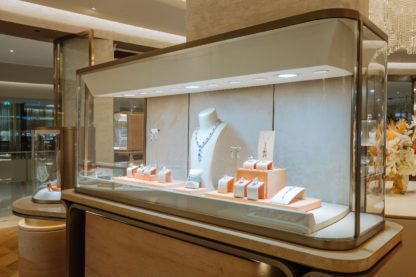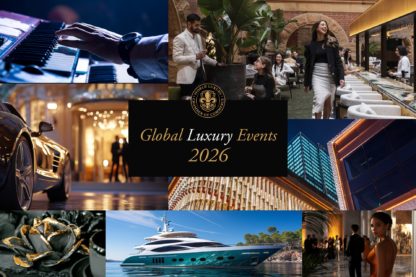Once, luxury brands set the tempo, and the audience followed without question. Today, Gen Z and Millennials have stepped into the spotlight, bringing their soundtrack, lighting, and request list. They expect more than heritage and polish; they want transparency about how the products are made, assurance that the planet isn’t paying the price, and proof that innovation is more than a marketing slogan. For long-established houses, the stage has been rebuilt entirely.
Prioritizing Inclusivity as a Growth Strategy
Younger consumers are looking for brands that reflect diverse realities, not just in advertising campaigns but in decision-making rooms. For them, authenticity comes from who holds power behind the scenes, how products are designed, and whether the brand actively addresses social equity.
Actionable Insights:
- Audit leadership and creative teams for diversity metrics, and set measurable targets for improvement.
- Partner with cultural consultants to ensure brand communications resonate across demographics.
- Launch initiatives that go beyond visual inclusion, focus on equitable hiring practices, and internal culture shifts.
Embedding Sustainability into the Luxury Value Proposition
Gen Z and Millennials do not see sustainability as a luxury add-on; they see it as a baseline requirement. Luxury brands are being evaluated on everything from material sourcing to energy use in production facilities. Stella McCartney’s pioneering work in bio-based materials is proof that responsibility can align with high-end desirability.
Actionable Insights:
- Implement transparent supply chain mapping and make it publicly accessible.
- Explore partnerships with innovators in circular materials and regenerative farming.
- Shift sustainability communication from “aspirational” to “accountable” by publishing progress reports with concrete data.
Innovating Beyond Aesthetics
For these consumers, innovation isn’t just about avant-garde design; it’s about function, interactivity, and future-readiness. The luxury watch industry’s move into hybrid mechanical-digital models and Balenciaga’s experiments with virtual fashion show that digital-physical integration is becoming a marker of modernity. Innovation is also a tool for personalization, with AI-driven styling recommendations and exclusive virtual previews becoming part of the high-end shopping ritual.
Actionable Insights:
- Allocate R&D budgets toward digital interaction tools that enhance exclusivity without losing intimacy.
- Experiment with immersive retail formats, from augmented reality fitting rooms to interactive flagship installations.
- Use consumer data with discretion, as privacy sensitivity is a key trust factor for younger buyers.
Recalibrating Pricing and Access Models
Millennials and Gen Z value experiences and access over static ownership. Luxury subscription models, fractional ownership of high-value goods, and members-only experiential events are attracting buyers who want flexibility without sacrificing prestige. Brands like Mytheresa are tapping into this through exclusive travel partnerships and early product access for loyal customers.
Actionable Insights:
- Pilot alternative access programs, limited-time rentals, VIP previews, or member-only digital drops.
- Frame these offerings as “expanded brand experiences” rather than discount-driven models.
- Track customer engagement across these formats to refine future offerings.
Future-Proofing Luxury Leadership
The shift in consumer priorities is not a temporary trend; it’s a generational restructuring of values. Leaders who thrive will treat inclusivity, sustainability, and innovation not as campaign slogans, but as integrated business imperatives. This means institutional change: embedding new KPIs, evolving leadership structures, and rethinking long-term brand storytelling.
Actionable Insights:
- Establish a cross-functional “future steering group” to align leadership on cultural, environmental, and technological priorities.
- Link executive compensation to performance on sustainability and diversity goals.
- Create brand narratives that look forward, positioning your house as a participant in cultural progress rather than a guardian of the past.
Key Takeaways: Strategies for Next-Gen Luxury Leadership
The leaders best positioned for the future will treat inclusivity as a structural imperative rather than a surface-level statement, ensuring that representation is embedded in decision-making and brand culture. Sustainability must move from being framed as a special initiative to becoming a baseline expectation, with transparency and measurable progress serving as the currency of trust. Innovation should be pursued with intention, using technology to enhance the emotional and sensory dimensions that define luxury. Ownership models also need rethinking, as younger consumers increasingly value access and experience over possession.
Ultimately, adaptability will be the defining quality; brands that evolve with shifting cultural and environmental priorities will not only endure but remain relevant in an era where values hold as much weight as heritage.
To learn more about the World Luxury Chamber of Commerce, visit: https://worldluxurychamber.com/
SOURCES: STELLA MCCARTNEY





